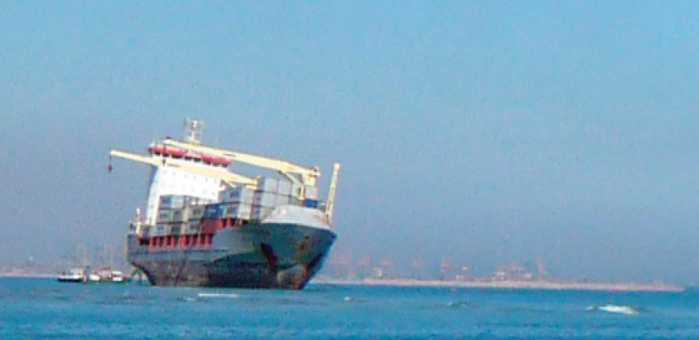The Swedish Club presents a case, which started off as a routine job with clearing the lower starboard sea-chest from ice, and ended with grounding. This case shows how bad weather conditions and a lack of clear procedures made this journey end with evacuation and towing.
The incident
The vessel was in ballast and sailing about seven miles from land on its way to the loading port in the NW Atlantic, with heavy winds blowing, as well as large waves.
There was also some ice in the water, so the crew had to clear the lower starboard sea-chest which was blocked with ice.
[smlsubform prepend=”GET THE SAFETY4SEA IN YOUR INBOX!” showname=false emailtxt=”” emailholder=”Enter your email address” showsubmit=true submittxt=”Submit” jsthanks=false thankyou=”Thank you for subscribing to our mailing list”]
The crew changed to the upper intake and removed the large cover from the lower sea suction filter, finding it choked with ice slush. While removing the ice, the main sea water valve, located on the side shell plate, started leaking.
While the crew were replacing the filter cover, one of the engineers applied a large valve wheel key to the actuator valve, in order to stop the leakage. Too much force was applied, which damaged the gear mechanism that operates the valve spindle and water leaked into the engine room at high pressure.
The crew tried to stop the leakage, but the pressure and volume of water were too great. Attempts to pump out the water entering the engine room were also unsuccessful as electric motors and control gear were splashed with sea water, leading to short circuits which disabled the bilge pumps.
What is more, the ship blacked out and started drifting in the severe weather conditions around 6-7 M off the coast. The Coastguard arrived at the scene and tried to attach a tow line, but the attempts were unsuccessful. The vessel then dropped both anchors, but it did not stop from drifting.
The vessel eventually grounded and the crew was evacuated. The next day a salvage team boarded the vessel by helicopter. They were assisted by two tugs.Wires were connected from the grounded vessel to the tugs.
Fortunately the weather improved and the ship was refloated and towed to the nearest port.
An underwater inspection showed extensive damage to the vessel shell plating. Operations continued over the following days, cleaning the engine room spaces with high pressure hoses and removing the pollutant from the vessel.
Lessons learned
- When carrying out a critical job like cleaning the sea suction, it is important that there are clear procedures on how the job should be done and, as in any critical operation, it is best to have two people check to ensure that mistakes are detected.
- A job like this should require a work permit and risk assessment to be completed.
- It is also important to run drills on how to deal with a salvage operation, so the crew is prepared.






























































